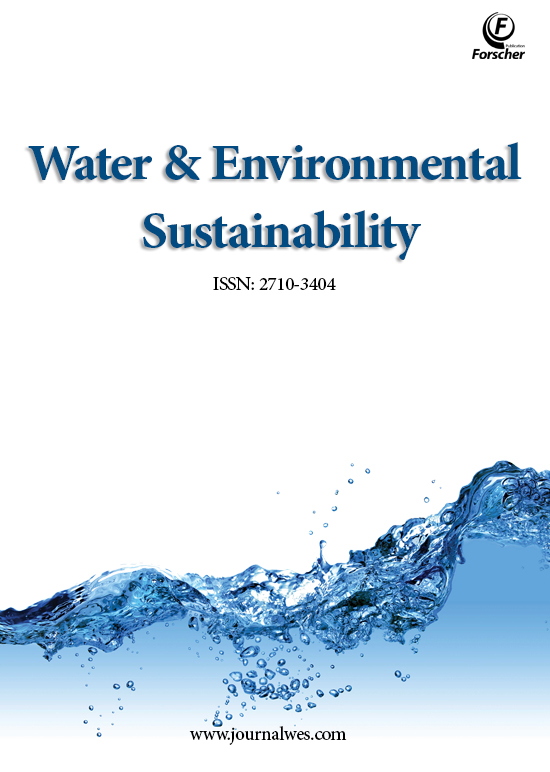Document Type : ORIGINAL RESEARCH ARTICLE
Authors
- Aida Isma M.I 1
- Thivya Maran 1
- Jamaiatul Lailah M.J 2, 3
- Putri Razreena A.R 4
- Omar R 5
- Hazmin M 6
- C.M Choo 7
- Rosmaria A.D 8
1 1. Faculty of Engineering and the Built Environment, SEGi University
2 Faculty of Engineering and the Built Environment, SEGi University
3 Jil Engineering Consult.Sdn Bhd.
4 SIRIM Berhad
5 Faculty of Engineering, Universiti Putra Malaysia
6 5. Faculty of Engineering, Universiti Selangor
7 School of Engineering and Physical Sciences, Heriot Watt University Malaysia Campus
8 Fisheries Research Institute
Abstract
The disposal of the shrimp aquaculture sludge requires large area and high amount of disposal cost. The improper treatment and disposal can cause soil and water pollution. Sludge drying is an effective solution to reduce the weight of sludge and eventually reduces the disposal cost. This study was aimed to assess the effectiveness of thermal treatment on drying shrimp sludge at different power and time of 270W, 450 W 630W and 60s to 390s, respectively. Heavy metals concentrations and chemical compounds were also determined. Results reveal that the best drying rate recorded were at power and time of 630 W and 240s, respectively. Fourier transform infrared spectroscopy spectrum (FTIR) shows that the main groups presence are aliphatic chains with double bonds, as well as carbonyl, hydroxyl and N–H groups in organic compounds. Sludge drying has proven to be effective in reducing moisture content and organic matters for shrimp aquaculture sludge. It could be considered as one of the alternative methods to handle sludge.
Keywords
ANKA, I.Z., FARUK, M.A.R., HASAN, M.M., AZAD, M.A.K., 2013. Environmental issues
of emerging pangas (Pangasianodonhypophthalmus) farming in Bangladesh. J. Prog. Agric. 24, 159–170.
ANASTAS P, WARNER J. Green chemistry. Frontiers; 1998.
CHOU, S.Y., LO, S.L., HSIEH, C.H., CHEN, C.L., 2009. Sintering of MSWI fly ash by microwave energy. J. Hazard. Mater. 163 (1), 357–362.
CRIPPS, S.J., BERGHEIM, A., 2000. Solids management and removal for intensive land-based aquaculture production systems. Aquacult. Eng. 22 (1), 33–56.
C.W. JIN, S.J. ZHENG, Y.F. HE, G.D. ZHOU, Z.X. ZHOU, Lead contamination in tea garden soils and factors affecting its bioavailability, Chemosphere 59 (2005) 1151–1159.
FANG L, TIAN Y, HUANG J L, ET AL. Mechanism study on the stabilization of heavy metal and organics in microwave dried sludge. J HarbinInsti Technol, 2007, 39(10):1591-1595.
FAO, 2007. Food and Agriculture Organization of the United Nations. Aquaculture—new opportunities and a cause for hope. /http://www.fao.org/ focus/e/fisheries/aqua.htmS.
GOWEN, R.J., ROSENTHAL, H., MIKINEN, T., EZZI, I., 1990. Environmental impacts of aquaculture activities. In: de Pauw, N., Billard, R. (Eds.), Aquaculture Europe'89 — Business Joins Science. European Aquaculture Society, Spec. Publ, No. 12. Bredene,Belgium, pp. 257–283.
HAQUE, M.M., MONIRA, M.S., SALAM, M.A., SHINN, A.P., Little, D.C., 2013. Use of Pangasius pond sediment for rooftop bag gardening: potential for rural-urban integrated aquaculture-horticulture. Aquacult. Asia Mag. XVIII (Oct–Dec (4)), 21–23.
HONG S.M., PARK J.K., LEE Y.O., 2004. Mechanisms of microwave irradiation involved in the destruction of fecal coliforms from biosolids. Water Resource. 2004:38:1615-1625.CAPPUCCINO, J. G. & SHERMAN, N. 2005. Microbiology: a laboratory manual.
LIN Q.H., CHENG H., CHEN G.Y. 2012. Preparation and characterization of carbonaceous adsorbents from sewage sludge using a pilot-scale microwave heating equipment. Journal Analytical Applied Pyrolysis. 2012:93:113-119.
- CHEN, X.M. LI, Q. YANG, G.M. ZENG, Y. ZHANG, D.X. LIAO, J.J. LIU, J.M. HU, L. GUO, Total concentrations and speciation of heavy metals in municipal sludge from Changsha, Zhuzhou and Xiangtan in middle-south region of China, J. Hazard. Mater. 160 (2008) 324–329
MENENDEZ J.A., INGUANZO M., PIS J.J. 2002. Microwave-induced pyrolysis of sewage sludge. Water Resource. 2002:36:3261-3264.
- FRANCIOSO, M.T. RODRIGUEZ-ESTRADA, D. MONTECCHIO, C. SALOMONI, A. CAPUTO, D. PALENZONA, Chemical characterization of municipal wastewater sludges pro- duced by two-phase anaerobic digestion for biogas production, J. Hazard. Mater. 175 (2010) 740–746.
P.MANARA AND A. ZABANIOTOU, “Towards sewage sludge based biofuels via thermochemical conversion: a review. “Renewable and Sustainable Energy Reviews, vol 16, no5, pp 2566-2582, 2012.
RICHEL A, JACQUET N. Microwave-assisted thermochemical and primary hydrolytic conversions of lignocellulosic resources: a review. Biomass-Convers Biorefinery 2015;5(1):115–24.
SANDRA T. MADARIAGA AND SANDRA L. MARÍN. (2016). Sanitary and environmental conditions of aquaculture sludge. Wiley.CULLEN, W. R. & REIMER, K. J. 1989. Arsenic speciation in the environment. Chemical reviews, 89, 713-764.
TANG B., YU L., HUANG S., LUO J., ZHUO Y. 2010. Energy efficiency of pre-treating excess sewage sludge with microwave irradiation. Bioresource Technology. 2010;101:5092-5097.
- KROGMANN, L.S. BOYLES, W.J. BAMKA, S. CHAIPRAPAT, C.J. MARTEL, Biosolids and sludge management, Water Environ. Res. 71 (1999) 692–714
YANG, H.C., SEO, Y.C., KIM, J.H., PARK, H.H., KANG, Y., 1994. Vaporization characteristics of heavy metal compounds at elevated temperatures. Korean J. Chem. Eng. 11 (4), 232–238..
YU Q., LEI H., LI Z., LI H., CHEN K., ZHANG X., LIANG R. 2010 Physicaland chemical properties of waste activated sludge after microwave treatment. Water Res. 2010; 44:2841-2849.
ZHENYU CHEN, MUHAMMAD T. AFZAL, AND ARSHAD ADAM SALEMA, 2014. Microwave drying of wastewater sewage sludge. Journal of Clean Energy Technologies, Vol. 2.
.

